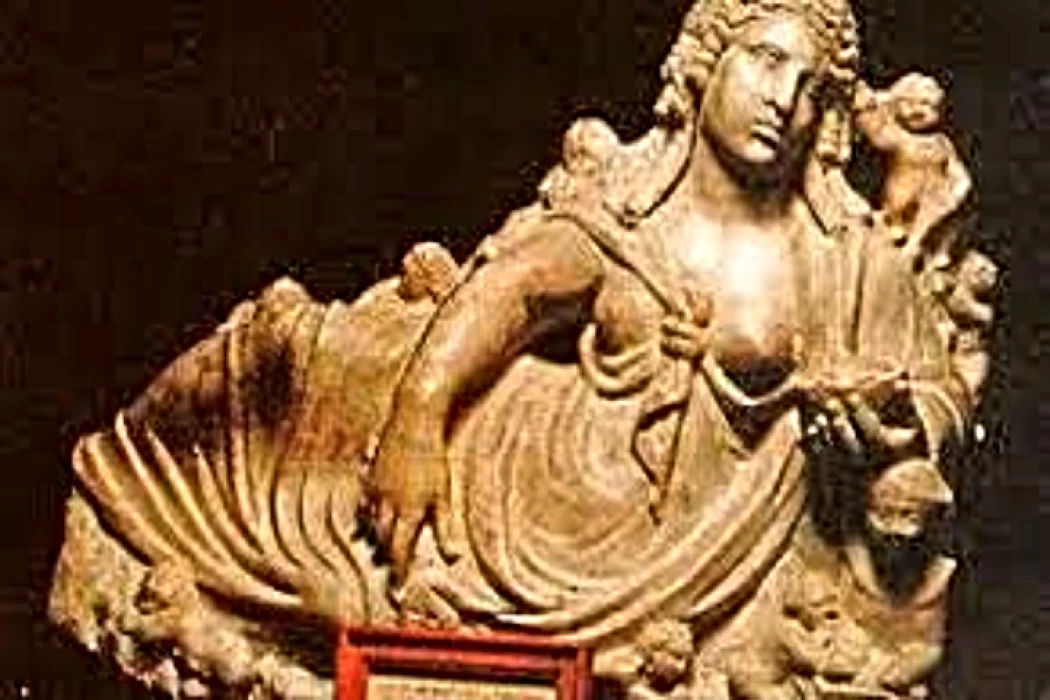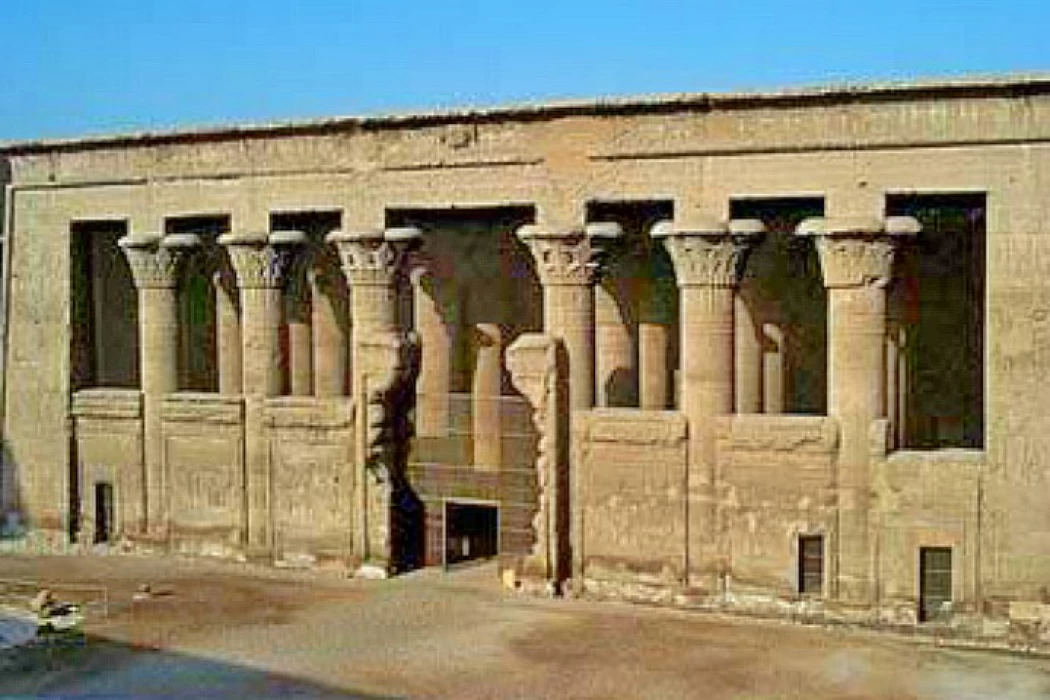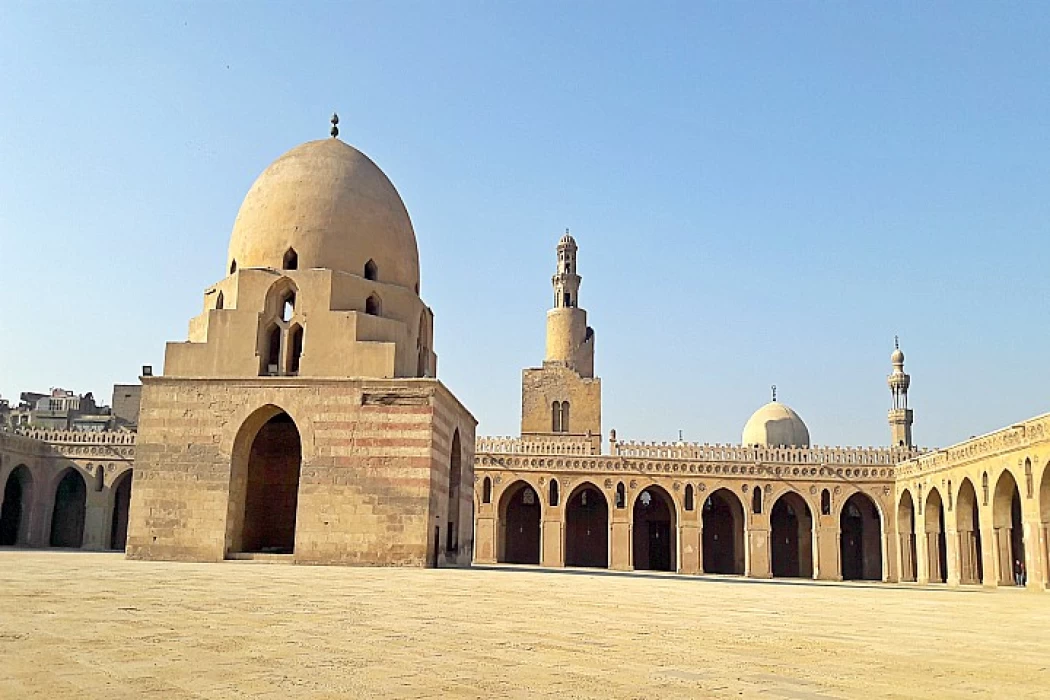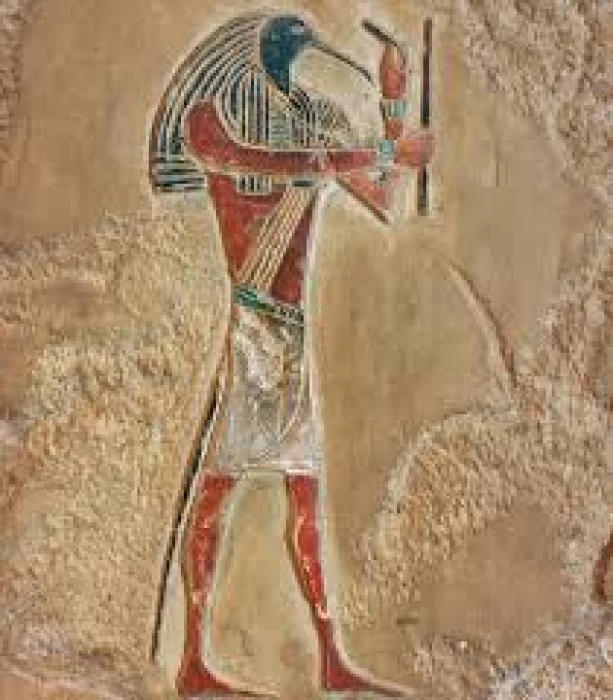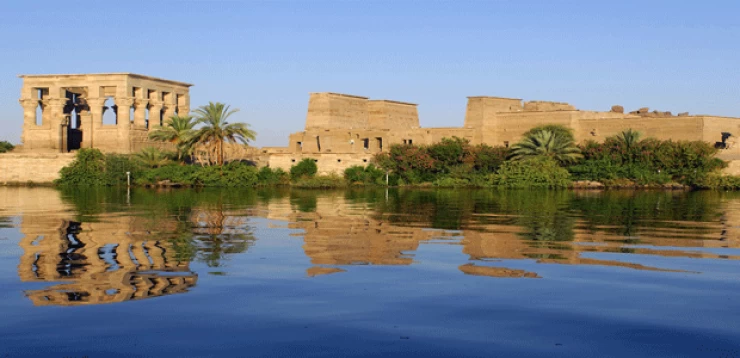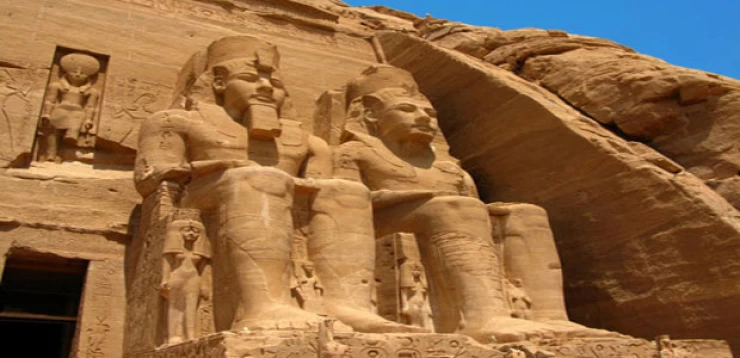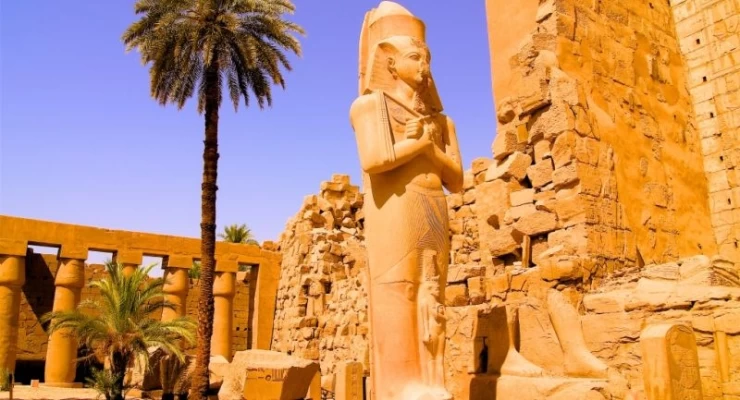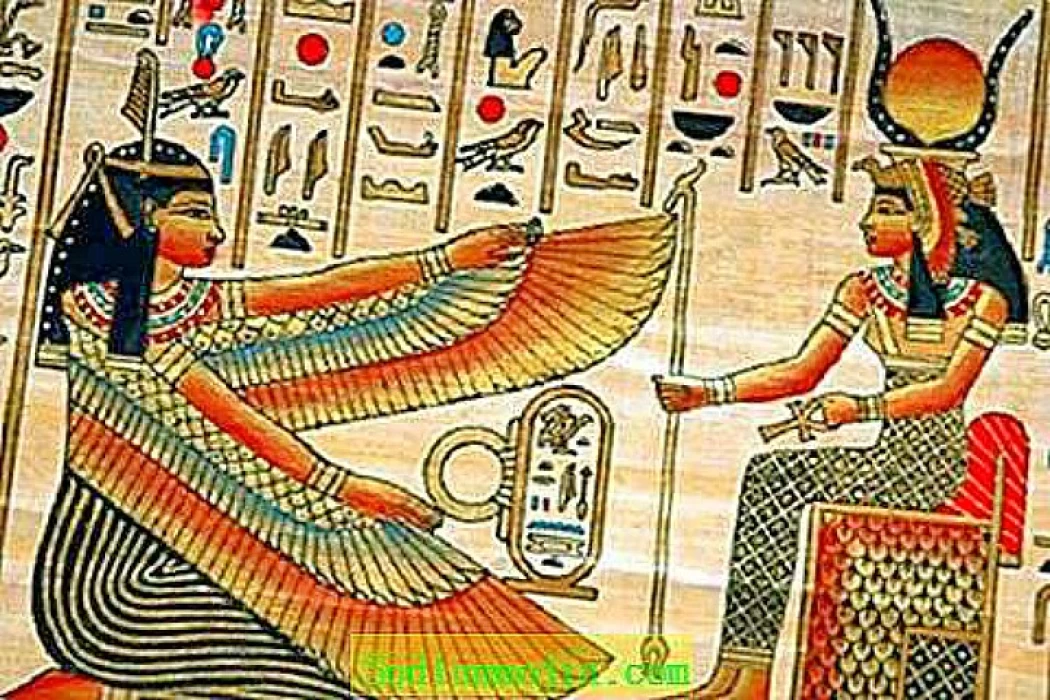
Goddess Isis
Goddess Isis
In the ancient Egyptian religion, there was more than one goddess. Still, despite this, they had a monotheistic belief, and one of the most important of these gods was the goddess Isis, who appeared from the Old Kingdom until the Greek and Roman eras, which indicates the power and greatness of this goddess in those periods.
Isis was a loyal wife to her husband Osiris and was the mother of Horus, and the prevailing belief at the time was that Isis was the goddess who guided the dead to the other world, as she did the same thing with her husband Osiris, but her importance was greater in burial and magic texts, as one of her titles was the goddess of magic in the ancient world, as she was also the goddess of fertility and motherhood. Isis was the mother of Horus, but there were some disputes about the real mother of Horus.
Then this goddess influenced the Greek and Roman gods and also most of the Mediterranean cities, and this goddess was likened to many gods in the Greek religion and then became part of the Roman religion until it ended completely in the Christian period, despite some beliefs that Christianity was influenced by the goddess Isis.
When did the worship of the goddess Isis begin, and where did she get her name from?
The ancient Egyptian religion included nine gods called the sacred tetragrammaton, who all came from the god Ra, as the legend says that the god of the earth married the goddess of the sky and gave birth to Isis, Osiris, and their brothers Set and Nephthys.
Isis appeared in the pyramid scripts, as she appeared for the first time in the era of the Fifth Dynasty, especially during the reign of King Ni Osir-Ra, and it is likely that this goddess began to be worshipped in the Delta region, as she was linked to the phrases mentioned in the pyramid scripts.
Many scholars disagreed about the reason for the name Isis and the origin of this word, as some suggested that the Egyptian name for her was Est and the name came in the Coptic language, and it was believed that the word Isis referred to the throne as a god because of the presence of the sign of the throne in her name in hieroglyphics, but others disagreed with this opinion because there is no evidence that the throne was a god in the ancient Egyptian religion.
What is the importance of Isis in ancient Egyptian religion?
Isis was a goddess who helped revive the dead as she did with Osiris, and Hathor was also reviving the dead as she welcomed them as their mother, but there was another belief that male gods could regenerate themselves again, and Isis could revive as well by imitating the abilities of her husband Osiris, and because of this, the importance of female gods increased, especially in the New Kingdom, the Ptolemaic era, and even in the Roman Empire.
It is said that Isis gave birth to Horus on a papyrus couch in the Delta and was trying to protect her son from dangers, especially from his uncle Set, who wanted to kill him so that he would not take the throne from him, and after Horus grew up, she helped him to challenge Set for the throne.
Isis is also mentioned in the Westcar Papyrus, which dates back to the Middle Kingdom, among the goddesses who will serve the new kings as she appeared in the New Kingdom, where she describes the divine birth of the kings and that she is their mother, as they considered many kings to be gods and children of gods, such as the goddess Isis, who was portrayed as a goddess who can predict the future and control the fate of people and also control the duration of human life.
Isis is considered the protector of the Egyptian kingdom in wars and helps the king in the afterlife, especially in the New Kingdom era, where interest in female goddesses increased, such as Hathor, who was the first goddess worshipped in ancient Egypt.
Isis is known for her magical powers, with which she revived her husband, healed her son, and used her magical powers to help him against Set.
The goddess Isis was also the goddess of the sky, as she was related to rain and the entire universe, especially in Greek mythology, where her name was related to the Greek moon goddess Artemis, and the universe was divided between them, as Isis represented the sky, her husband represented the underworld, and their son Horus represented the earth.
The relationship between Isis and the goddess of fertility is written on one of the walls of the Philae temple.
The Goddess Isis in Art
She appeared in Egyptian art as a woman sitting on a throne with two cow horns on her head, but with time they were changed to crescents, especially in Greek times, and Isis Fortuna also appeared holding the rudder of a ship in her hand while controlling fate and appeared in many other forms.
The worship of Isis continued to spread and increase until the late Roman Empire, but there came a period when they rejected the emperor because of the decadence that occurred in the worship of Isis, as women were doing illegal things inside the temples that were dedicated to Isis, and the priests wore white robes and shaved their heads, and this was for pureness.
Isis has several temples in different places, for example, her temple in Pompeii, the Temple of Philae in Egypt, and a temple for her and Serapis in Rome, and water was considered one of the ways to venerate her, especially in the Hellenistic era, and she was also portrayed as a symbol of the flood and the Nile River.
Isis has been mistaken for the Virgin Mary, and the icon of the Virgin and Christ has been likened to the icon of Isis and her son Horus.
The Story of Isis and Osiris
After Osiris sat on the throne, where he organized the gods, for example, Maat represented goodness and Set represented violence—it is said that Osiris kicked Set, and others said that he married Nephthys secretly, which made him take revenge on him and cut him into many pieces and distribute his parts throughout Egypt, but Isis appeared and started collecting the parts of her husband and used some magical objects to revive him and bring him back to life and gave birth to their son Horus.
So that the goddess of all these times continues with the same power and influence and even extends from Egypt to other countries until she becomes one of the goddesses of the entire Roman Empire, but every beginning has an end, and the goddess Isis ends with the emergence of Christianity, but she leaves for us many monuments and temples in more than one country and different civilizations.
Latest Articles
Admin
The Graeco-Roman Museum
The Greco-Roman Museum of Alexandria is Egypt's most important archaeological museum, displaying a wide and impressive array of antiquities of the Roman and Greek periods, a testament to Alexandria as a hub of culture and civilization in the ancient world.
Admin
Temple of Khnum
The Temple of Khnum in Esna is a great religious monument that stands as a living record of the excellence of Egyptian artists and priests during the Ptolemaic and Roman eras and should attract every lover of Egyptian history and civilization.
Admin
Beni Hassan Tombs
The tombs of Beni Hassan are among the most prominent evidence of the greatness of ancient Egyptian civilization, as they reflect the Egyptians' mastery of architecture and sculpture, as well as the minute details documenting aspects of their daily life and religious beliefs. These tombs, which date back to the Middle Kingdom, are not just burial sites but archaeological treasures that reveal the nature of Egyptian society at the time as well as its political and economic relations.
Admin
Wadi El Rayan
Wadi El-Rayan is one of the most important natural tourist attractions in Egypt, especially in Fayoum, where there are many wonderful places such as waterfalls and springs for medical tourism, as well as mountains for safari and camping.
Admin
Muslim Conquest in Egypt
Egypt became part of the Islamic world and played a pivotal role in Islamic and Arab history. The conquest had a different aspect than many conquests, as it was characterized by organization and negotiation, as well as military power.
Admin
God Thoth
Thoth served as the spiritual representation in Egyptian mythology whose divine nature embodied reason as well as justice and eternal wisdom. The legacy from Thoth spread throughout thinking, religion and science, thus preserving his name in Egyptian and Greek philosophical works.
